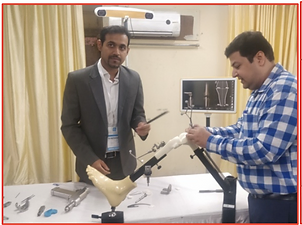Arthritis results in erosion of the cartilage, leaving the bone ends without a protective cover. This produces friction on moving the joint. Replacing this degenerated bone and cartilage with metallic, plastic, or ceramic parts to produce a smooth surface that allows frictionless movement is called joint replacement. Knee, Hip, Shoulder and Elbow are the most commonly replaced joints.
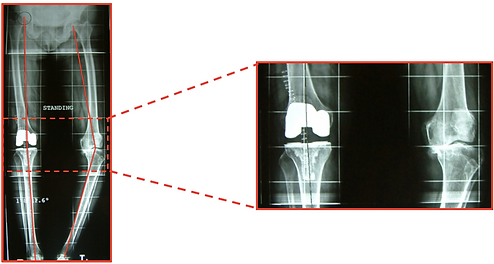
Knee Replacement
Only a few millimeters of bone are removed and it is replaced by smooth metallic components. A special stress-resistant plastic cushion is placed in between the metallic components to act as the joint cartilage. This recreates the natural ‘gap’ in the joint and also corrects the alignment of the knee.
The modern knee implants allow free range of movement and are designed to last for many years.
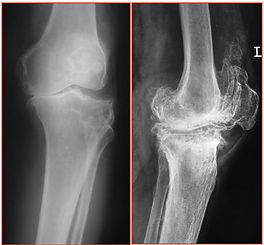
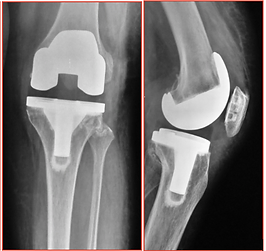
Hip Replacement
The hip joint is made up of a ball component (head of the femur bone) and a socket component (acetabulum socket). In partial hip replacement (known as Bipolar Hemiarthroplasty), the head of the femur is removed and replaced by a metallic ball. This is usually performed in elderly patients with fractures of the hip.
In Total Hip Replacement the socket component is also shaved by a few millimeters and replaced by an artificial socket of metal and toughened plastic. This is usually done where both the ball and socket have been damaged due to AVN (avascular necrosis) or arthritis.
These implants are extremely durable, especially if the bone quality and muscle strength is maintained even after surgery.

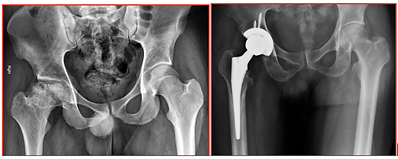
Shoulder Replacement
The shoulder is similar to the hip joint. It is also made up of a ball and socket component. The shoulder has muscles around it, known as the ‘Rotator Cuff’, that are crucial to its function.
Partial replacement of the shoulder (hemiarthroplasty) is the implantation of a metallic ball in place of the head of the humerus bone. This is usually done for fractures of the head of the humerus. If the rotator cuff is also severely damaged ‘Reverse Shoulder Replacement’ is performed. In this the position of the ball and socket component are interchanged, allowing the muscles around the shoulder to function more efficiently.
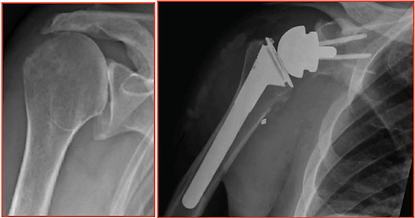
Elbow Replacement
Elbow is one of the most complex joints of the body. It is also notorious for developing stiffness after injury, surgery or infection. Elbow replacement must be performed in carefully selected patients.
Radial head replacement, a type of partial elbow replacement, is done in patients with severely fractured head of radius bone. Total elbow replacement is reserved for patients with severe arthritis of the elbow following injury, fracture, etc.
Robotic & Computer-assisted surgeries
Computer-assisted surgeries are done for complicated cases like those with severe deformities of bones or previously operated cases with implants already in the bone. The surgery is still performed by the surgeon, but the computer-assistant provides data that helps the surgeon in making decisions during surgery.
Robotic joint replacement is also similar to computer-assisted surgeries. Here again, the surgeon performs the surgery, while controlling the robotic arm. The ‘robot’ by the use of artificial intelligence guides the surgeon and helps in preventing complications.
Such technology has been shown to be of benefit in complex cases with severe deformities. They help in accurately restoring alignment and recreating the joint gap in cases where conventional techniques are unable to do so.
